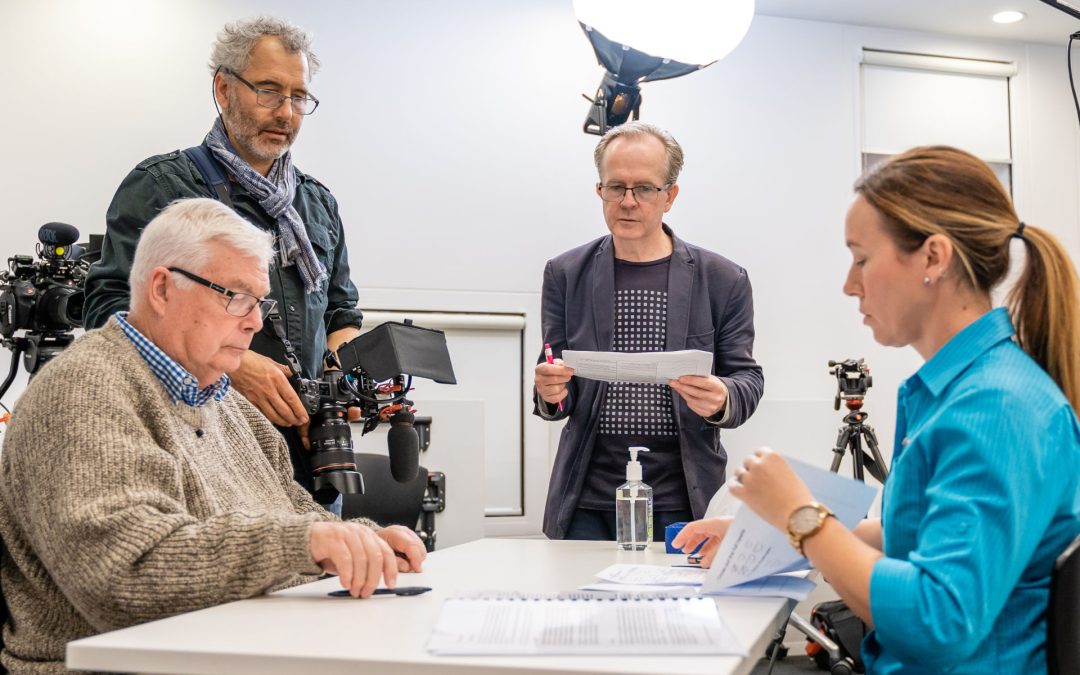As the saying goes, “fail to prepare, prepare to fail”. And as it turns out, this adage could easily apply to video production, where preparation in the form of a solid creative brief is critical to success.
In this article, I’m breaking down the components of a comprehensive video brief – one that will equip the video production team with the insights they need to deliver a video that connects with your audience, conveys your message, and achieves your objectives.
Firstly though, you might be wondering whether you need to have all this information ready to go at the very start of the process, when you’re looking to get a quote for video production. In fact, it’s better to reach out to the video production team as early as possible, rather than waiting until you have every little detail finalised.
This is because video production specialists will have the skills to extract the required information – in the right way, at the right time – while adding their own expertise and experience to develop an effective and comprehensive brief.
Writing a Creative Video Brief: What Do You Need to Include?
Purpose of video
One of the most important elements to consider when developing your video brief is the intent of the video. What will it be used for? What are the objectives of this video? Why does it need to be made in the first place?
Getting clear on the purpose of your video and articulating this in your brief is fundamental in ensuring the resulting video delivers on these objectives and fits the intent of the piece.
Target audience
Next up, we need to identify who the video will be aimed at. Having detailed information on the demographics of your primary audience is a great way to ensure the style and messaging of the video are tailored for maximum impact.
From age range to job function – even down to how busy they are – knowing who you’re targeting with your video will help to create an asset that resonates with the intended audience.
The response you want from your audience
What do you want your audience to think, feel and do after watching your video? Knowing the response you’d like your video to elicit is key to ensuring the asset achieves your objectives and has the desired impact.
For example, do you want the viewer to adopt a new app, get behind an important change, or simply reach out to your team? These responses will require specific calls to action, as well as story-telling techniques within the video to compel the viewer to act.
Key messages
Mapping out the key messages of your video in the creative brief is an essential component of the video production process. Your key messages need to be clear and compelling, so they can be easily understood and acted upon by your target audience. It’s important to keep your list of key messages succinct, as trying to communicate too many messages can result in none of them hitting the mark.
You may want to split your key messages into primary and secondary messages, so each can be given the relevant importance and positioning within the video. If the video is part of a wider campaign, be sure that the key messages are consistent with the overall campaign messaging.
Video content
In this part of the creative brief, you can provide details of the content wish to be included in the video. For example, this might cover images you want to showcase, specific B roll/overlay footage, or interviews you’d like to include.
There are many different types of content options available, from graphical elements to drone footage or demos of the technology or processes you’re explaining in the video. You may also have existing content which that can be leveraged.
Style, tone and feel
Your video needs to align with the tone and style of your business, while also having the right ‘feel’ to connect with your audience and encourage them to take action. What impact do you want your video to have? From there, we can establish what style of video will be best suited to achieve these objectives. For example, do you want the video to be funny and lighthearted, upbeat and positive, or perhaps serious and formal?
If you have a style guide or tone of voice guidelines, you can share them with the video production team to ensure the video adheres to these specifications.
Length of video
You may already know how long your video needs to be, but if you’re unsure, the video production team can provide you with guidance on a suitable length based on the purpose and platform.
The optimal video length will often depend on how it will be delivered to your audience. For example, if it’s mainly for social media, then you’ll probably want to limit it to 60 seconds or under. Whereas if the video will be used at a face-to-face workshop or within an eLearning course, five minutes might be workable.
Another option that’s a common requirement for our clients here at Magpie is to have a main, longer video and a cut-down version for social media.
Distribution plan
Once your video is produced, how are you going to distribute it? This part of the creative brief focuses on the channels you’ll use to promote and share your video, such as your website, social media channels, or within an eLearning module.
While the above may seem like a lot to cover, getting clear on all these areas before we move ahead with the video production is essential for ensuring the best possible result.
And remember, you don’t have to figure this all out alone – the video production specialists here at Magpie Creative will be happy to work with you on developing a strong creative brief that sets you up for video success.

